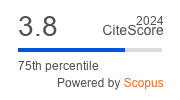Article | Open Access
Reusing Timber Formwork in Building Construction: Testing, Redesign, and Socio-Economic Reflection
| Views: | 4109 | | | Downloads: | 3658 |
Abstract: In 2018, the construction sector was responsible for 39% of the worldwide energy and process-related carbon dioxide emissions (Global Alliance for Buildings and Construction et al., 2019). This is partly due to the embodied carbon, which represents the carbon emissions related to building construction and material production (LETI, 2020). While zero energy buildings and zero energy renovations start to get the operational carbon down, the circular economy aims to do this by closing material loops and stimulating the reuse of discarded materials in building construction (Ellen McArthur Foundation et al., 2015). Although it is not a new phenomenon, material reuse does require a substantially different approach and is at this point not yet common in the building industry. This is especially true for load-bearing components. This article presents a pilot project for the reuse of discarded timber formwork for the construction of the façade and (load-bearing) substructure of a new house. Through this pilot case and by reflecting on a series of similar cases, it studies the remaining challenges for material reuse but also proposes and assesses redesign strategies that will allow upscaling the reuse of timber formwork. The project shows that although waste, material, and money can be saved by using reclaimed materials, it does complicate the design and construction process and, as such, does not necessarily reduce the total project budget. Moreover, for reuse to become a current practice, new design approaches and collaborations will need to be established. Finally, socio-economic factors must be considered to increase the acceptance of reclaimed materials in new building construction.
Keywords: circular economy; circular housing; CO2 reduction; material reuse; resource efficiency; sustainable architecture
Published:
© Arno Pronk, Stijn Brancart, Fred Sanders. This is an open access article distributed under the terms of the Creative Commons Attribution 4.0 license (http://creativecommons.org/licenses/by/4.0), which permits any use, distribution, and reproduction of the work without further permission provided the original author(s) and source are credited.


